SIGGRAPH 2016: Data Materialities
Chair(s):
- Jonah Brucker-Cohen
-
- City University of New York
Art Papers Chair(s):
- Edward Shanken
-
- Savannah College of Art and Design
Location:
Anaheim, California, United States of America
Dates:
July 24th-28th, 2016
Art Show Overview:
Introduction
SIGGRAPH 2016 and Leonardo/ISAST present the eighth joint publication of SIGGRAPH Art Papers. Art Papers investigates the roles of artists and the methods of art-making in an increasingly global, networked, and technologically mediated world. Art Papers contributes to our understanding of the history of art, informs contemporary artistic and critical practices, and anticipates and stimulates future trajectories. At the SIGGRAPH 2016 conference, authors present their papers, which, along with a digital supplement, appear in this special issue of Leonardo.
In addition to the core topics of digital and interactive arts, Art Papers highlights excellent practices in the field and addresses both artistic and technical audiences. This year, we especially encouraged papers that consider transdisciplinary research at the frontiers of art, design, science, and engineering; that expand the international and cultural breadth of SIGGRAPH discourses; and that dovetail with the 2016 Art Gallery theme of Data Materialities. An art paper might consist of a project description; a work of history, theory, or criticism; or an exposition of a novel method or technique. With one exception, the 2016 Art Papers consists of descriptions of new creative works, with particular emphasis on their historical and/or theoretical significance. The span of topics is very diverse, ranging from a visualization of Korean genealogy during the Choson dynasty to an appraisal of artist James Turrell’s work in the context of computer-programmed perception.
The jurying process is intense. The Art Papers Committee takes primary responsibility for reviewing the submissions. As chair, I convened an eight-person committee, representing expertise in visualization, gaming, DIY, physical computing, interdisciplinary collaboration, architecture and design, history and theory, and other fields. Each submission was evaluated by at least two Committee members, plus two additional jurors selected by the Committee. Reviews included extensive written comments, which authors have reported are particularly valuable. SmithBucklin (the association management firm that supports SIGGRAPH) was instrumental to the organization of 2016 Art Papers.
The jury evaluated each submission according to the following criteria:
Scope and magnitude of its contribution to literature on digital arts, computer graphics, and/or interactive techniques
Clarity of thesis and compelling exposition
Quality and relevance of references to establish context and support the author’s claims
Quality and relevance of support media to reinforce the author’s claims
After extensive virtual communications, the Committee gathered at Rhode Island School of Design, which hosted the in-person jury meeting in March. After a full day of deliberations, and taking into account feedback from the editorial team at Leonardo, the Committee selected what we deemed to be the best, most publishable papers. However, our work was not yet over. The selected papers required improvements specified by the jury before being accepted for presentation at SIGGRAPH and publication in Leonardo. To oversee this process, Committee members communicated required changes to the authors and “shepherded” the papers to final draft stage on a very tight deadline.
It must be highlighted that, aside from the professional organizational support, all of this work was done on a voluntary basis. For all of their hard work, commitment, and sharing of expertise and ideas, I would like to thank the members of the Art Papers Committee and the extended jury. We hope that our efforts have made a valuable contribution to SIGGRAPH, to Leonardo, and to discourse in the field in general.
Edward A. Shanken
Associate Professor, Arts Division
Director, Digital Arts and New Media
University of California, Santa Cruz
SiIGGRAPH 2016 Art Papers ChairData Materialities Art Gallery Curator
Jonah Brucker-CohenProject Manager
SmithBucklin
Art Papers Jury:
- Varnelle Noel
-
- Penn State University
- Jichen Zhu
- Garnet Hertz
-
- Emily Carr University of Art + Design
- Alejandro Borsani
-
- Rhode Island School of Design
- Kayla Anderson
-
- School of the Art Institute of Chicago
- Stephanie Boluk
- Ruth West
-
- University of North Texas
- xREZ Art+Science lab
Art Papers Reviewers:
- Asli Arpak
- Fulla Abdul Jabbar
- Julieta Aguilera
- John Andrew Berton Jr.
- Yulatta L. Blalock
- Tega Brain
- Jon Cates
- Kelly Christian
- Evelyn Eastmond
- Jill Fantauzza
- Angus Graeme Forbes
- Kai Franz
- Jacob Gaboury
- Madeline Gannon
- Esteban Garcia Bravo
- Laura Garofalo
- Paul Hertz
- Todd Kesterson
- Omar Khan
- Scott Kildall
- Patrick LeMieux
- Christopher Lueg
- Paho Mann
- Valentina Nisi
- Joel Yuzhi Ong
- Danielle Oprean
- Don Patterson
- Andrea Polli
- Özge Samanci
- Geoffrey Thomas
- James Thurman
- Adam Trowbridge
- Robert Twomey
- Jessica Westbrook
Website:
http://s2016.siggraph.org/conference
Exhibition Artworks:
-
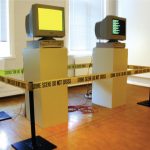
Crime Scene: Installation for Two Comput...
[Mogens Jacobsen]
Categories: [Interactive & Monitor-Based] -
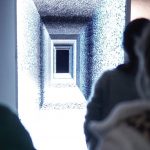
Doors
[THEORIZ Studios]
Categories: [Electronic/Robotic Object] [Installation] -
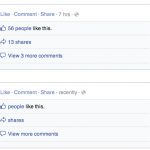
Facebook Demetricator
[Benjamin Grosser]
Categories: [Internet Art] -
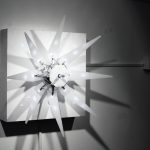
Flower
[Viktor Jan]
Categories: [3D & Sculpture] -
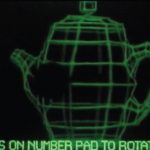
Grafikdemo
[Niklas Roy]
Categories: [Interactive & Monitor-Based] -
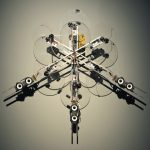
Metaphase Sound Machine
[Dmitry Morozov]
Categories: [Interactive & Monitor-Based] -

Pixelbots
[Disney Research] [ETH Zurich]
Categories: [Interactive & Monitor-Based] -
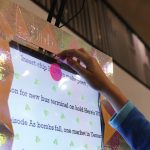
Plinko Poetry
[Peiqi Su] [Deqing Sun]
Categories: [Installation] -
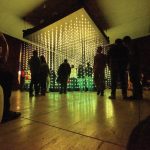
Submergence
[Squidsoup]
Categories: [Installation] -
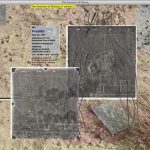
The Evolution of Silence
[Rachele Riley]
Categories: [Internet Art] -
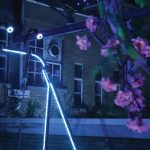
The Kinetic Storyteller
[Tine Bech]
Categories: [Animation & Video] [Installation]
Exhibition Writings and Presentations:
-
Title:
Deletion Process_Only you can see my history: Investigating Digital Privacy, Digital Oblivion, and Control on Personal Data Through an Interactive Art Installation
Author(s):
Category: Paper
Abstract Summary:
In light of recent controversies surrounding massive data collection by corporations and government agencies, digital privacy, the right to oblivion, and data ownership have become increasingly important concerns. This paper describes the author’s artwork, Deletion Process_Only you can see my history, an interactive art installation based on her eight-year personal search history in the Google search engine. While the personal search history maintains a sense of privacy, according to the company’s own declaration, the author reveals this archive to viewers in order to raise awareness and provoke reflection on the aforementioned subjects. The author discusses her motivation, describes the making process and the decisions made at each step of designing the installation, while integrating at the same time a deeper discussion on the place of digital privacy and oblivion within the contemporary approach to art and technology.
Title: Perceptual Cells: James Turrell’s Vision Machines Between Two Paracinemas
Author(s):
Category: Paper
Abstract Summary:
James Turrell’s perceptual cells incorporate the neurophysiological apparatus as an active participant not only in the reception of projected moving-images, but also in the very production and transmission of virtual moving-images. Combining two perceptual phenomena—the stroboscopic effect and the Ganzfeld Effect—Turrell’s perceptual cells integrate the architecture of projection with the architecture of organic vision to produce a single networked extra-sensory medium. This paper performs a phenomenological analysis of Turrell’s Light Reignfall (2011) perceptual cell, following its design, effects on the viewer, and cultural and material history. In the process, the paper situates the perceptual cell between the history of avant-garde cinema (what historians have called “paracinema”) and the history of perceptual psychology and parapsychology (what the author terms “para-cinema”). Between these two paracinemas, Turrell’s perceptual cells activate the aesthetic potential of what the author discusses as “edgeless projection.”
Title: Pulse Shape 22: Audiovisual Performance and Data Transmutation
Author(s):
Category: Paper
Abstract Summary:
Pulse Shape 22 is an improvisational audiovisual performance featuring shortwave radio transmissions as the sole source material for real-time audio processing alongside video of the sun projected through cast-glass lenses designed specifically for this piece. The structure of the piece is derived from metrics on energy accumulation over a period of 2.2 nanoseconds resulting from the targeting of 60 laser beams on a single tetrahedral hohlraum in weapons testing experiments as carried out by the Los Alamos Inertial Confinement Fusion unit, at the Omega Laser Facility at the University of Rochester. Pulse Shape 22 is an exploration of architectural space through the use of site- and time-specific information found in regions of the electromagnetic spectrum outside the reaches of the human
sensory apparatus. It is an attempt to alter the audience’s perceptions of their surroundings and create
a moment of rupture from hidden worlds found in our local environment.
Title: Raised On YouTube: Cultural Data Materialization Using Plants
Author(s):
Category: Paper
Abstract Summary:
Raised on YouTube is an installation and game that grows plants using only the light of projected video and makes ecology legible as a multiplayer game. The challenge of finding the most nurturing video is crowdsourced online. As players watch a webcam feed of the plants surrounded by two-way mirrors, their computer power is diverted to photosynthetic video analysis. The system calculates the photosynthetic score for each video using a basic botanical model. The resulting shape and density of the plant grow bed serves as a data visualization of the energy patterns in the cultural stream. The system provides opportunities to reflect on the effects of long-term exposure to contemporary media and to imagine ecological possibilities of participatory culture.
Title: Visual History with Choson Dynasty Annals
Author(s):
Category: Paper
Abstract Summary:
For this paper, the authors selected three historical events taken from the Annals of the Choson Dynasty that represent dramatic and tragic stories about parents and their sons for data visualization. By connecting names with entities indicating conductions from history books, they found interesting patterns that tell stories with embedded relations. The visualized images in this paper were mainly code-generated, based on the data of the Annals, with some graphic embellishment added.




